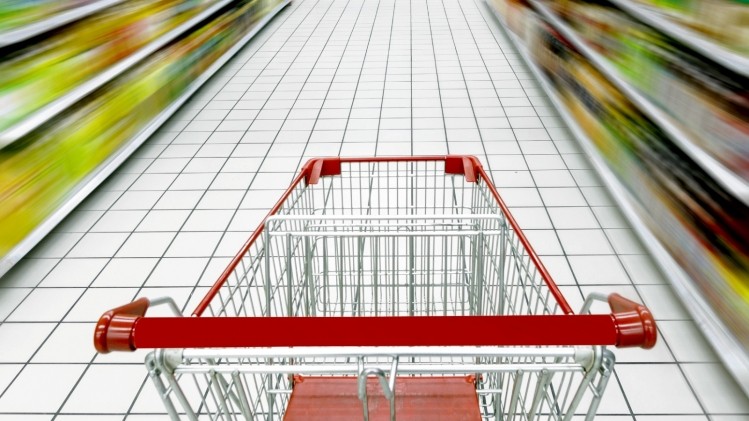China direct
Haves and have-nots: China’s new two-speed shopping economy

“China’s economy is evolving to adapt to slower GDP growth, a shift in focus from manufacturing to services, and a push for innovation-led growth over investment-led growth,” said Jason Yu, general manager of Kantar Worldpanel China, which has just released its annual retail report, in association with Bain & Company, a consultancy.
“As we track the shopping behaviour of Chinese consumers, we see the distinct effects that these and other major economic shifts are having on their consumption patterns.”
Tracking 26 categories across the four biggest consumer goods segments, including packaged food and beverages, the Kantar report shows that a substantial gap is forming between often imported premium goods and everyday products—perhaps suggesting that consumer tastes are changing as much as China’s consumer boom is waning.
It found that brands in categories that traditionally cater to blue-collar workers, such as instant noodles and value beer, are suffering as many manufacturing jobs move to lower-cost countries. In 2015, the volume of instant noodles declined by 12.5%, and beer by 3.6%, largely because of a reduction in sales of cheap brands.
This low-end slowdown is intensified by a decline in China’s overall worker population, which peaked in 2012, resulting in more low-income retirees, the report said.
At the same time, firms such as Tingyi, manufacturer of Master Kong noodles, one of the most popular brands among consumers in a market equivalent where over 40bn packets are eaten a year, reported a 36% fall in profits last year to US$256m. Likewise, the share price of Tsingtao Brewery, China’s top low-end beer maker, plunged 42.97% last year.
Yet growth across packaged foods and beverages is not falling, it is slowing, with the Kantar report suggesting that the market increased by 3.5% last year, even if this represents the lowest rate of growth in half a decade. This mix of contraction and expansion reflects a two-speed consumer market differentiated by value segment.
This is evident in the continuing battle between foreign and local brands. In 2015, local FMCG companies continued to gain share over their foreign rivals on an aggregate basis.
Local companies grew by nearly 8% in the categories Bain and Kantar studied, contributing to a 109% share of market growth—although the biggest advances were in personal care, not the food and beverage market.
Foreign companies, however generated the greatest share increase in segments including infant formula, instant noodles and beer, gaining ground either through heavy marketing investments or as the result of food-safety concerns with local products. However, growth in foreign brands still declined by 1.4 percent in 2015.
Last year also marked a significant shift in geographic growth: until now, a city’s tier has been a major factor in the velocity of value growth, though growth across all city tiers is moving towards the 3-5 percent range.
“This means brands can’t assume higher growth rates in lower-tier cities,” the report said.
“FMCG companies have built vast distribution networks to introduce their products to Chinese consumers. With those networks now in place, brands face a new challenge: increasing the rate of sales at each distribution point,” said Bruno Lannes, partner in Bain’s Greater China consumer products practice and co-author of the report.
“As driving frequency is hard to do and is low in many categories in China, brands often invest to offer premium products, which is proved to be a successful approach for squeezing growth when penetration plateaus or declines.”
More stories from China…
One in four Hong Kong diabetics will develop heart or kidney failure
Diabetic Hongkongers should pay more attention to how they control blood glucose levels after research found that one in four diabetics in the SAR will develop severe complications, including heart or kidney failure, within seven years.
That means that 16,000 of Hong Kong’s more than 390,000 diabetics could die within that time period after diagnosis, and more than 11,000 could develop kidney disease.
The figures are based on a study of 25,344 patients between 1994 and 2015, which found that 27% suffered an occurrence of serious complications over a seven-year observation period.
Of the patients, almost 14% died within that period, while 9.4% contracted terminal kidney disease—a grave concern in a nation where the number of diabetics is expected to increase to over 1m by 2030.
Hongkongers are more predisposed to such complications due to their genetic make-up, according to Andrea Luk, an associate professor in Chinese University’s department of medicine and therapeutics.
According to one study from 2006, Asian diabetics are 14% more likely to develop diabetic kidney disease than Caucasians.
“The risk of complications is not the same among different races, partly because of different genes,” Prof. Luk said.
Samsung Welstory forms joint-venture for China food-service expansion
Samsung’s food service affiliate has established a joint-venture in China to tap into the country’s food distribution market.
Samsung Welstory, which has been operating in China since 2012, joined China’s Yinlong Agriculture and Kokubu, Japan’s biggest food wholesaler, to form Shanghai Welstory Food with a 70% stake in the venture.
"We decided to join hands with our business partners to more effectively capitalise on China's rapidly-expanding food service and distribution markets," said Bong-yung, the Korean company’s chief executive.
"The partnership, armed with excellent business capabilities of its three companies, will grow into an organisation that will contribute to the advancement of the China's food distribution industry and will become a brand the Chinese will value.”
State-run Yinlong focuses on cultivating and processing a wide range of agricultural products, while Kokubu has established advanced infrastructure for logistics.
"Samsung Welstory can create a great deal of synergy by combining Kokubu's extensive logistics network and Yinlong Agriculture's high-quality crops and vegetables," added Kim.
"We will continue to expand our presence on the mainland and do the best we can to provide high-quality food service to Chinese consumers at affordable prices.”
Samsung Welstory, Korea’s biggest catering service business, said it expected China’s US$260bn food service market to grow at an annual rate of 9.2% until 2020.
The company, supplies 120,000 meals a day to 44 different sites in China, and 180,000 means in Vietnam, aims to earn KRW800bn (US$700bn) in sales from its overseas businesses by the end of this decade.

















